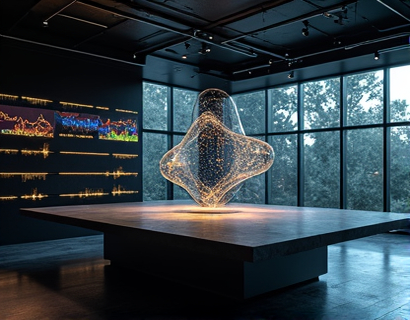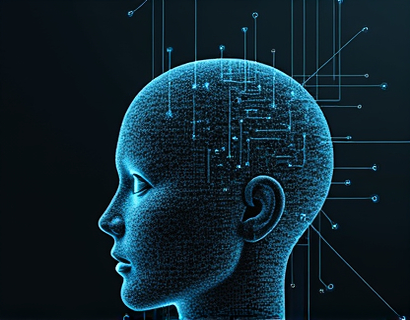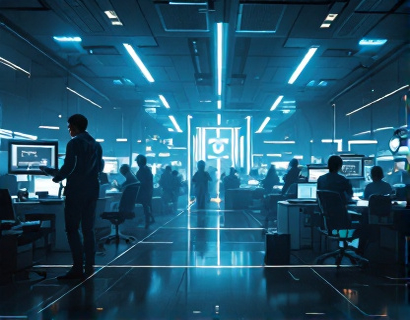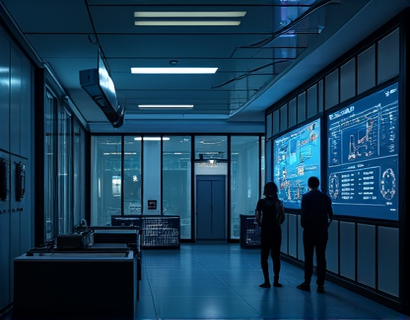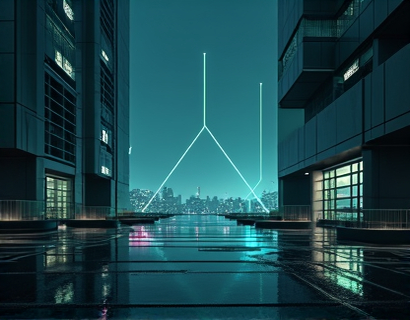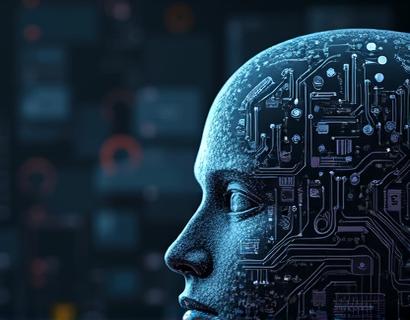UX Design Trends 2025: Elevating Digital Success with Expert Strategies and Insights
In the rapidly evolving landscape of digital design, staying ahead of the curve is crucial for success. The field of User Experience (UX) design continues to transform, driven by technological advancements, changing user behaviors, and emerging trends. This comprehensive guide delves into the key UX design trends for 2025, offering expert strategies and practical tips to help designers enhance their practice and drive digital success. Whether you are a seasoned professional or just starting out, understanding these trends is essential for creating impactful and user-centric digital products.
1. Personalization at Scale
Personalization has long been a cornerstone of UX design, but 2025 sees a significant shift towards personalization at scale. With the increasing availability of data and advanced analytics, designers can now tailor experiences to individual users without compromising on efficiency. This trend involves leveraging machine learning algorithms to analyze user behavior and preferences, enabling real-time customization of content, recommendations, and interactions.
To implement personalization at scale, start by collecting and analyzing user data ethically and transparently. Use segmentation to group users based on shared characteristics, and apply dynamic content strategies to deliver relevant experiences. For instance, an e-commerce platform can use a user's browsing history and purchase history to suggest products that align with their interests, enhancing engagement and conversion rates.
2. Voice User Interfaces (VUIs)
The rise of smart speakers, virtual assistants, and voice-enabled devices has propelled VUIs to the forefront of UX design. In 2025, the focus will be on creating seamless and intuitive voice interactions. Designers must consider the unique constraints and opportunities of voice interfaces, such as the need for clear and concise language, natural conversation flows, and error handling.
To design effective VUIs, prioritize conversational design principles. Conduct user research to understand how people interact with voice devices and what their expectations are. Use speech recognition and natural language processing (NLP) tools to create responsive and accurate voice commands. For example, a smart home system can be designed to respond to voice queries about temperature, lighting, and security, providing a hands-free and convenient user experience.
3. Inclusive Design
Inclusivity is no longer a niche concern but a fundamental aspect of UX design. 2025 emphasizes the importance of designing for a diverse range of users, including those with disabilities, different cultural backgrounds, and varying levels of technical proficiency. Inclusive design ensures that digital products are accessible and usable by everyone, fostering a more equitable digital world.
To adopt inclusive design practices, start by incorporating diversity into your design team and user research processes. Use accessibility guidelines such as WCAG 2.1 to ensure that your designs meet the necessary standards. Conduct user testing with a diverse group of participants to identify and address potential barriers. For instance, a web application can include features like adjustable text sizes, high-contrast modes, and keyboard navigation to accommodate users with visual impairments.
4. Micro-Interactions
Micro-interactions are small, engaging elements that enhance the user experience by providing feedback and adding delightful touches to everyday interactions. In 2025, these subtle animations and effects will play a crucial role in making digital products more intuitive and enjoyable. Micro-interactions can range from loading spinners and button animations to form validation and error messages.
When designing micro-interactions, focus on clarity and purpose. Ensure that each interaction serves a clear function and enhances the user's understanding of the system. Use subtle animations to guide users through tasks and provide immediate feedback on their actions. For example, a form submission can be accompanied by a smooth transition and a confirmation message, reassuring the user that their input has been received.
5. Dark Mode and Color Preferences
The trend towards dark mode and customizable color settings continues to gain momentum. Dark mode not only reduces eye strain and conserves battery life on OLED screens but also offers a modern and sleek aesthetic. In 2025, designers are encouraged to provide users with the flexibility to choose their preferred color scheme, catering to individual preferences and needs.
To implement dark mode and color preferences, start by designing a flexible color palette that supports both light and dark themes. Use CSS variables to make it easy to switch between themes dynamically. Provide a clear and accessible way for users to toggle between modes, such as a switch in the settings menu. For instance, a mobile app can offer a dark mode option that adjusts text and background colors to improve readability and visual comfort.
6. Augmented Reality (AR) and Virtual Reality (VR)
AR and VR technologies are increasingly being integrated into UX design, offering immersive and interactive experiences. In 2025, these technologies will find applications in various domains, from e-commerce and education to entertainment and training. Designers must consider the unique challenges and opportunities of AR and VR, such as spatial awareness, user movement, and interaction methods.
To design effective AR and VR experiences, start by understanding the context and purpose of the application. Conduct user research to gather insights on how users interact with these technologies and what their expectations are. Use 3D modeling and prototyping tools to create immersive environments and intuitive interfaces. For example, an AR shopping app can allow users to visualize furniture in their home before making a purchase, enhancing the shopping experience and reducing return rates.
7. Sustainability in Design
As environmental concerns become more prominent, sustainability is emerging as a key consideration in UX design. 2025 sees a growing focus on creating digital products that are not only functional and user-friendly but also environmentally responsible. This trend involves optimizing resources, reducing digital waste, and promoting eco-friendly practices.
To incorporate sustainability into your design practice, prioritize efficiency and performance. Optimize code and assets to minimize load times and energy consumption. Use eco-friendly hosting solutions and consider the carbon footprint of your digital products. Additionally, educate users on sustainable practices through your designs, such as promoting digital over physical documents or providing tips for reducing digital waste. For instance, a productivity app can include features that encourage users to save energy by turning off notifications during off-hours.
8. AI and Machine Learning Integration
The integration of AI and machine learning (ML) into UX design is transforming how products adapt and respond to user needs. In 2025, designers will leverage these technologies to create more intelligent and personalized experiences. AI can enhance various aspects of UX, from content recommendation systems to predictive text and automated customer support.
To integrate AI and ML effectively, start by identifying areas where these technologies can add value. Use ML algorithms to analyze user data and behavior, enabling predictive and adaptive features. Ensure that AI-driven decisions are transparent and explainable to build user trust. For example, a news app can use AI to curate a personalized news feed based on the user's reading history and preferences, keeping them informed and engaged.
Conclusion
As we navigate the exciting landscape of UX design in 2025, embracing these trends and strategies is essential for driving digital success and enhancing user satisfaction. By focusing on personalization, voice interfaces, inclusivity, micro-interactions, color preferences, AR/VR, sustainability, and AI integration, designers can create innovative and impactful digital products. Stay informed, stay curious, and continue to push the boundaries of what is possible in the world of UX design.

























